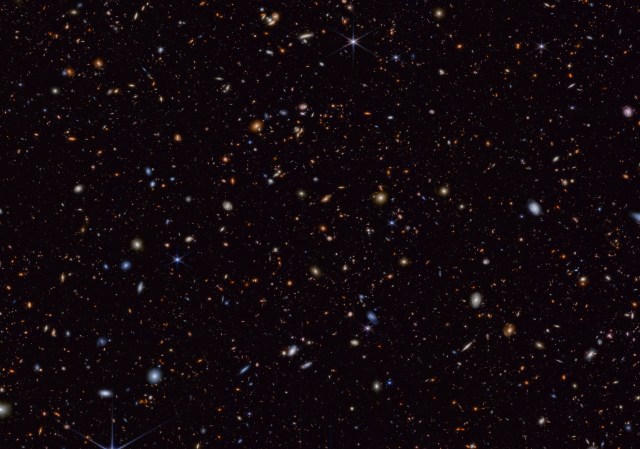 Source: Visit website
Source: Visit websiteIn The News:
• NASA's James Webb Space Telescope explores star formation in the distant universe (ScienceDaily) • Hubble Space Telescope witnesses a rare celestial event: a gamma-ray burst (Space. com) • European Space Agency's Gaia mission maps the Milky Way galaxy in unprecedented detail (ESA) • Astronomers discover two massive black holes at the center of the galaxy (Phys. org) • Scientists detect water vapor on the hottest exoplanet ever recorded (NPR) • New research reveals the first image of a black hole's shadow (Ars Technica) • NASA's Perseverance rover discovers evidence of seasonal water on Mars (NASA) • Boynton Canyon on Mars shows signs of ancient river delta... scientists confirm (The Guardian)Peering deeply into the cosmos, NASA's James Webb Space Telescope is giving scientists their first detailed glimpse of supernovae from a time when our universe was just a small fraction of its current age. A team using Webb data has identified 10 times more supernovae in the early universe than were previously known. A few of the newfound exploding stars are the most distant examples of their type, including those used to measure the universe's expansion rate.
"Webb is a supernova discovery machine," said Christa DeCoursey, a third-year graduate student at the Steward Observatory and the University of Arizona in Tucson. "The sheer number of detections plus the great distances to these supernovae are the two most exciting outcomes from our survey."
DeCoursey presented these findings in a press conference at the 244th meeting of the American Astronomical Society in Madison, Wisconsin.
To make these discoveries, the team analyzed imaging data obtained as part of the JWST Advanced Deep Extragalactic Survey (JADES) program. Webb is ideal for finding extremely distant supernovae because their light is stretched into longer wavelengths — a phenomenon known as cosmological redshift .
Prior to Webb's launch, only a handful of supernovae had been found above a redshift of 2, which corresponds to when the universe was only 3.3 billion years old — just 25% of its current age. The JADES sample contains many supernovae that exploded even further in the past, when the universe was less than 2 billion years old.
Previously, researchers used NASA's Hubble Space Telescope to view supernovae from when the universe was in the "young adult" stage. With JADES, scientists are seeing supernovae when the universe was in its "teens" or "pre-teens." In the future, they hope to look back to the "toddler" or "infant" phase of the universe.
No comments:
Post a Comment